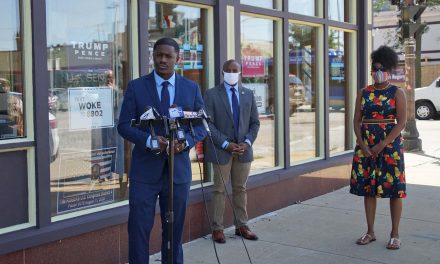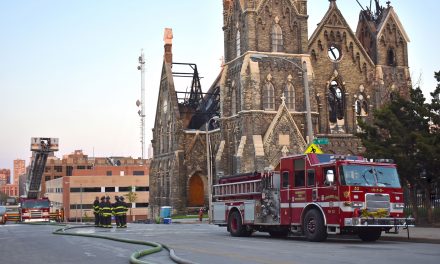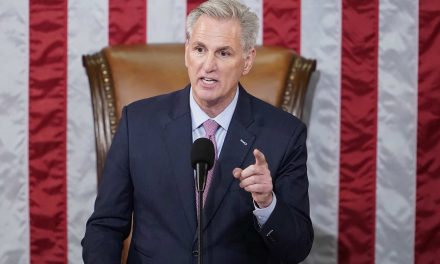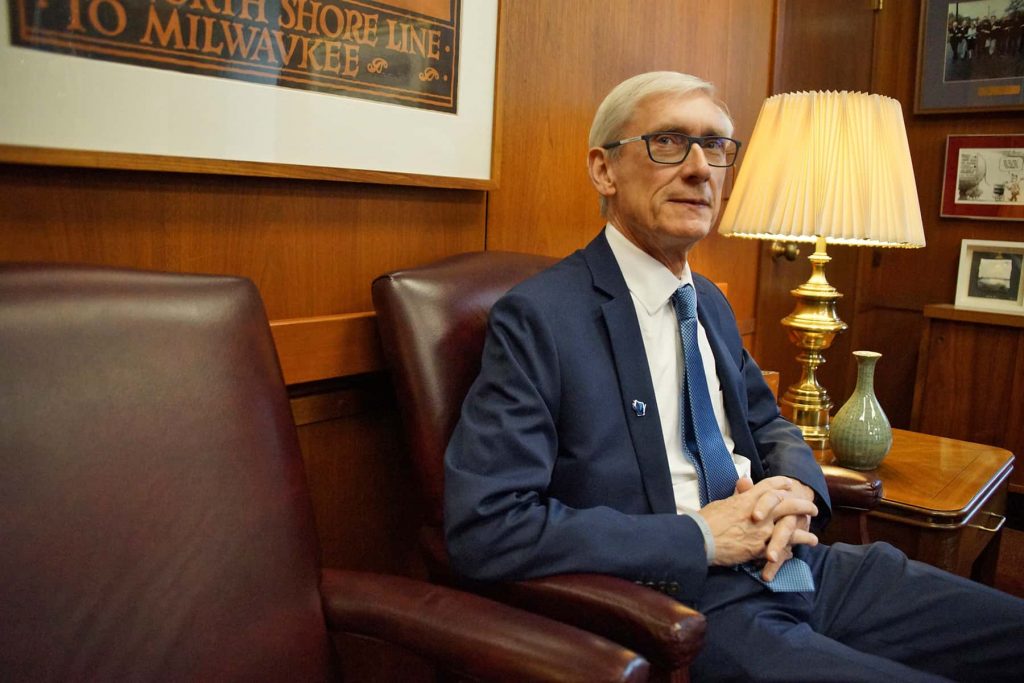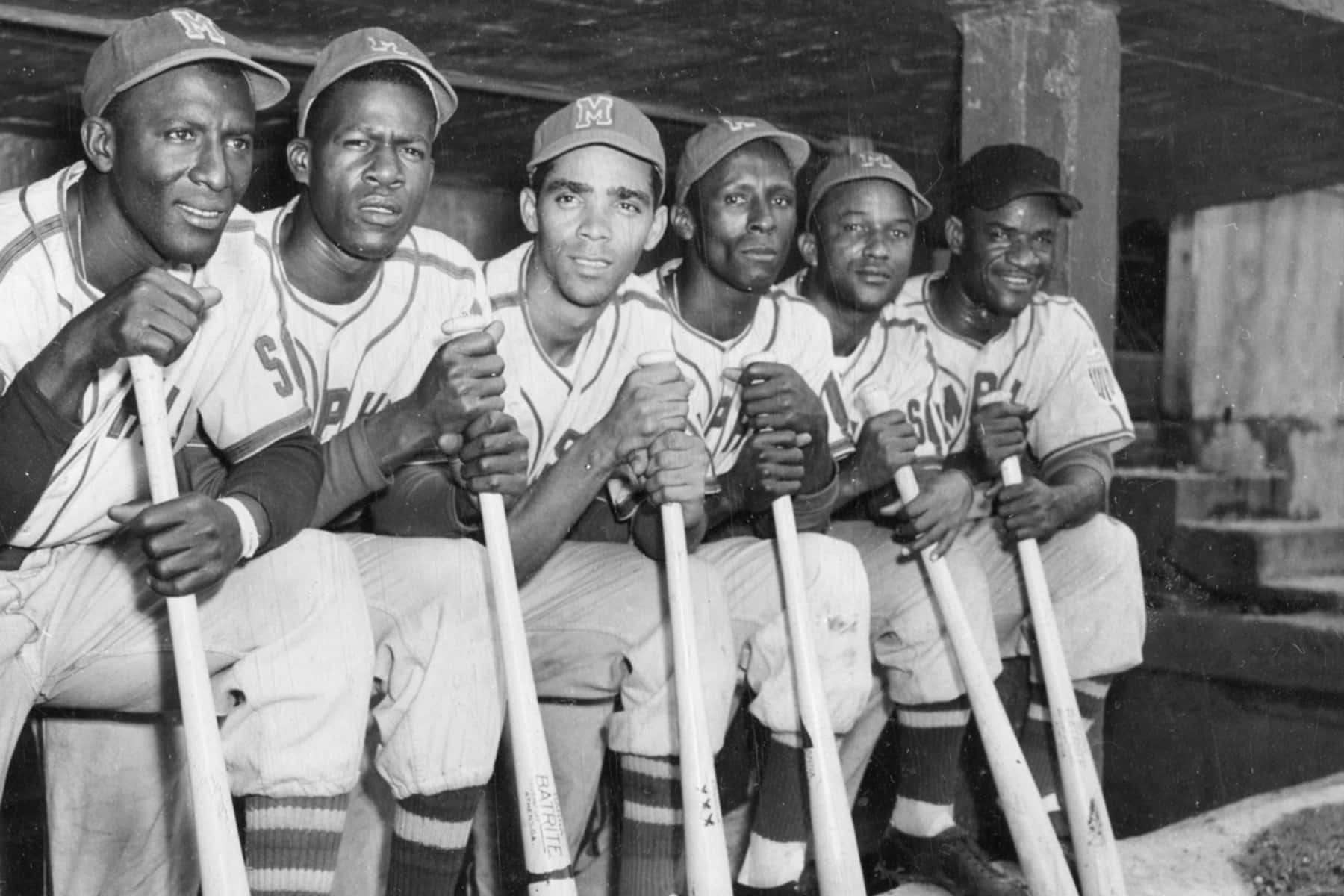
“It is very clear, therefore, that no State can, by any act or law of its own, passed since the adoption of the Constitution, introduce a new member into the political community created by the Constitution of the United States. It cannot make him a member of this community by making him a member of its own. And for the same reason it cannot introduce any person, or description of persons, who were not intended to be embraced in this new political family, which the Constitution brought into existence, but were intended to be excluded from it.” – Dred Scott v Sanford 1857 Supreme Court Decision
I keep hearing people talk about the fear of change that White people in the country have. They tell me that racism and the reactions to the protests and demands that are garnering so much attention right now point to fear among White people. I hear that White people are afraid that if Blacks and other marginalized groups are given things, that means White people must give up something. This idea of a zero sum game is alive and well in the psyches of White people around the country.
I agree with the idea that some White people are in fear of these changes but I also think there is another layer to this onion. The idea of a level playing field. White society created an un-level playing field and have maintained it for so long that it feels normal. When I hear White people shouting about “their rights” I don’t hear about the rights of other people who are not in their exclusive club.
One of the clearest examples of how this un-level playing field plays out and exposes White fear of competition is in the history of major league baseball. The history of the sport in the late nineteenth and twentieth century is a microcosm of American life. The creation of an exclusive club for White people and the ramifications of what happened when that club is finally opened up to non-Whites shows what happens when the playing field is shifted to be a little bit less un-level.
On February 2, 1876 The National League, baseball’s first major league was formed. On May 1, 1884 Moses Fleetwood “Fleet” Walker became the first Black player in major league baseball. Some people know that part of the story. What they don’t know is that four months later he played his last game on September 4, 1884. Once again a first that is celebrated but had much less real significance than we give it credit for. One person can not integrate a whole sport by himself or with the addition of a handful of others.
During the previous season on August 10, 1883 Adrian “Cap” Anson of the Chicago White Stockings (now the Chicago Cubs), refused to enter an exhibition game against the minor league Toledo Blue Stockings if Walker was allowed to play. When he discovered he would lose a full day of pay by sitting out he decided to play. Four years later, in July 1887 Anson continued in his attempts to marginalize Black players by forcing the Newark team to bench its black players during an exhibition game. One of the baseball leagues in existence at the time, The International League, shortly thereafter began moving towards banning black players.
In 1901 John McGraw the winningest manager in National League history attempted to pass off a Black player named Charlie Grant as Cherokee Indian Charlie Tokohoma so he could play for the Baltimore Orioles. It did not work. Chicago White Sox Owner Charles Comiskey recognized Grant and exposed the ruse. He famously said:
“If McGraw keeps this `Indian’ I will put a Chinaman on third base. This Cherokee is really Grant fixed up with war paint and feathers.”
The policy of not permitting black players went back to the years just after the Civil War ended before the sport became completely organized as a major league. In 1867 Black members of the Pythians of Philadelphia tried to gain admittance to the Pennsylvania Base Ball Association according to the comprehensive history written by Rick Swaine, The Integration of Major league Baseball. The National Association of Base Ball Players formally barred Black players. League owners and these leagues successor organizations established the ridiculously named “gentlemen’s agreements” to exclude Black players.
As a member of the Toledo team, one of Walker’s teammates said he was a great catcher but still derisively referred to him. “[Walker] was the best catcher I ever worked with, but I disliked a Negro and whenever I had to pitch to him I used to pitch anything I wanted without looking at his signals.” According to Swaine Blacks continued to play in the minor leagues with at least 33 of them having been documented and seven Black players was the peak number in 1887.
Black second baseman Bud Fowler had his White teammates on the Binghamton team protest against his presence on the team. In 1887 nine White players wrote a telegram to the front office. They threatened to strike.
“if the colored players, who have been the cause of all our trouble, are not released at once.” A few days later, Fowler and his .350 batting average that had caused so much trouble were gone.”
Clearly there was jealousy involved in this decision. Men who had been part of the nearly four million enslaved people in the country just two decades earlier were now “showing up” their White peers by playing well. The White players did not want to compete on even footing with these Black men. Coincidentally this decade was the beginning of a surge of lynchings across the country. At least seventy blacks were lynched in 1887 and a total of 534 were lynched across the country from 1882-1887.
Less than a decade later, the US Supreme Court ruled in the infamous Plessy v Ferguson case. The case upheld the constitutionality of racial segregation laws in public facilities as long as these segregated facilities were supposedly equal in quality, the idea known as ”separate but equal.” This was cemented into US law and laid bare the segregation of people of color from not just public spaces and accommodations but much more importantly, from opportunities that became exclusively for Whites.
This aspect of Jim Crow is rarely talked about. These laws, policies and practices for decades excluded Blacks and other people of color from having access to the “American dream.” There was no American dream for people of color, it was an American nightmare. Getting work, becoming homeowners, voting, getting a quality education were just a few of things Whites took for granted but denied to people of color.
We have all been told that Major League Baseball was integrated in 1947 by Jackie Robinson. I argue that one man can not integrate an entire league. He integrated one team, the Los Angeles Dodgers. It was not until July 1959 when the Boston Red Sox became the last team to have a Black player, Elijah “Pumpsie” Green. Hank Thompson became the first Black player on two separate teams. In 1947 he was the first Black player for the Baltimore Orioles and in 1949 for the San Francisco Giants. He spoke of the fans being openly racist.
“The worst fans were in Cincinnati. Whenever there was a lull, some loudmouth would yell: `Nigger’ … and you could hear it all over the place.”
It was two years after Robinson’s debut that the Cleveland Indians became the first team with three Black players at the same time. In 1950 The Brooklyn Dodgers were the first team with four Black players. It was not until 1954 before the Dodgers were the first team with five Black players in their lineup for a game.
The Boston Celtics professional basketball team that season drafted the first Black player into the NBA when they selected Chuck Cooper and he and Earl Lloyd became the first Black players in the NBA. On March 21, 1946 The NFL Los Angeles Rams were forced to sign at least one Black player to fulfill their lease of the Los Angeles Coliseum. They signed Kenny Washington a former star at UCLA as the first modern era Black player.
One of the ironies of how we define race is that several of the first Black players signed by or playing for teams would today be called Hispanic/Latino instead of Black. Multiple teams were integrated by Black or Latin American players. Examples include the 1949 New York Yankees signing Luis Marquez as their first Black player but it was not until 1954 that Elston Howard became the first to play for the team; in 1951 Minnie Minoso was signed by and played for the Chicago White Sox, as their first Black player; in 1952 Juan Delis and Luis Morales were the first Black players signed by the Washington Senators but the first to play for them was Cuban star Carlos Paula in 1954: Puerto Rican star Nino Escalera in 1954 became the first Black player for the Cincinnati Reds; In 1957 Cuban Chico Fernandez integrated the Philadelphia Phillies; Ozzie Virgil in 1958 debuted as the first non-White player for the Detroit Tigers.
Those Black and Latin American players who were finally given a chance to compete with major league teams became some of the biggest stars in the league for years. Black and Latin American players were able to fill the top tiers of baseball record books as well as its Hall of Fame when they gained access to the league.
Players who debuted during the integration phase 1947-1959 set a standard of success that the White players and owners had denied them an opportunity for since before the turn of the century. Jackie Robinson, Willie Mays, Hank Aaron, Roberto Clemente, Ernie Banks, Bob Gibson and Frank Robinson are all in the Baseball Hall of fame for their feats on the diamond and considered all-time great players.
Likewise, in other professional sports like basketball and football which finally opened their doors to non-White players success also followed. When the playing field is leveled we see the results. I think much of what we see in discriminatory treatment of people of color across the nation’s history is related to this fear of competition not just a desire to keep opportunities just for Whites. Another place where this fear of competition is clear to me is in American education. Keeping enslaved and free Black people illiterate was designed to ensure they could not compete freely with Whites.
The much talked about, but mostly misunderstood Brown v. Board of Education decision by the US Supreme Court in 1954 can best be studied by looking at what happened after the decision came down. In the second phase of the case Brown II, the decision about implementation is significantly more important than what they said in Brown I where they decreed that segregated schools were inherently harmful to black children psychologically. When the Supreme Court used the words “all deliberate speed” to tell the nation when the integration of schools was to begin, they set up desegregation to fail.
According to John Kyle Day in his study of resistance to Brown, The Southern Manifesto: Massive Resistance and the Fight to Preserve Segregation, the effort to maintain segregation and therefore an un-level playing field lasted way longer and in a much stronger way than we were taught in school.
“On March 13, 1956, ninety-nine members of the Eighty-Fourth United States Congress promulgated the Declaration of Constitutional Principles, popularly known as the Southern Manifesto…This southern profert formally stated opposition to both federally mandated public school desegregation as declared in the U.S. Supreme Court decision Brown v. Board of Education (1954) and the emerging Civil Rights Movement that ultimately destroyed the southern caste system known as Jim Crow.”
Across the South the fight against a level playing field in schools showed up in K-12 schools and colleges and universities. Most of us are unfamiliar with the case of Autherine Lucy. In 1952 Autherine Lucy and Pollie Ann Myers Hudson applied to the University of Alabama. Both women were denied admission because they were Black. Lucy challenged the decision and after three wasted years in court she was admitted but was not allowed to use the dorms or dining halls on the campus. She had to drive fifty-eight miles from Birmingham to Tuscaloosa each day to attend classes and then drive back home at night. Hudson was not able to gain admission.
On the evening of Friday February 3, 1956 the day after Lucy’s first day attending classes, a crowd of angry Whites gathered along University Boulevard in downtown Tuscaloosa. They sang “Dixie” and shouted “Keep ’Bama White!” A group gathered on the grounds of the school President’s Mansion and a cross was burned nearby on the lawn of Dean William Adams. The next night all hell broke loose.
White students from the school along with a crowd of White high school students and other angry young Whites harassed any Black motorists or pedestrians in town vandalizing their cars and chasing them away from downtown. People in town sold Confederate flags, eggs and tomatoes to rioters according to contemporary accounts. The crowd infused with a sense of bravery from drinking copious amounts of alcohol grew exponentially as word spread around town that the police were doing nothing to stop their bad behavior. They began to chant “Hey, hey, ho, ho, Autherine has got to go!”
Rioting over the weekend did not satisfy the mob. On Monday morning as Lucy was accompanied on campus by a local Black minister they were met by a mob of three hundred protestors. They were chased throughout the day while moving from class to class and when placed into a car for safe keeping the car was pelted with rocks, and had its windows shattered. The police stood by and watched, offering no assistance. A group of White women shouted “Kill her, kill her, kill her!”
The Dean of Women and one of her assistants were caught up in the hysteria trying to calm the crowd down. The assistant, Jefferson Bennett, was attacked by the mob while Lucy attended her next class and they shouted “Kill him! Kill him!” And “Nigger lover, nigger lover!” He made it to a phone and warned that the mob intended to lynch Lucy.
Lucy was then suspended from school for “her protection.” She was escorted back to Birmingham by police that night. Several campus organizations condemned the rioting but refused to come out in support of desegregation. University President Oliver Cromwell Carmichael addressed over 8,000 students calling for Lucy to be permanently removed from the school. Carmichael used a tactic that would be seen many times in the coming years, to blame the riots on outside elements. Lucy was asked about what happened.
“I can’t hate them as individuals. Maybe they would have killed me if they had gotten me out. I don’t know. All I could do was pray, and I thought, am I going to die? I didn’t intend to cause all this violence and agitation among my fellow citizens and fellow students. I merely wanted an education. I will keep fighting until I get one.”
Lucy transferred to the historically black Talladega College while a challenge to her suspension and use of the dorms and lunchrooms went to court. In March a federal judge ordered the school to readmit Lucy. Instead of following this order they expelled her the following day. She moved to New York where Thurgood Marshall and Constance Baker Motley, two of her attorneys helped her to recover from the traumatic events.
The police in Tuscaloosa made just three arrests over the four days of rioting by Whites in the city. The chief admitted that rumors of a planned lynching were credible. Day wrote that “Buford Boone, the segregationist editor of the Tuscaloosa News, ominously described the riot as “an eyewink away from murder.” Boone warned that the rioters “would have killed this girl if they could have gotten their hands on her.” He rightly charged that “there was no aggressive effort to control the mob,” and chastised local officials for the “breakdown of law and order and abject surrender to what is expedient rather than a courageous stand for what is right.” In the meantime Alabama Governor Jim Folsom spent those harrowing days fishing.
Around this time, Whites began to blame Lucy for what happened instead of holding the state and campus officials as well as rioters responsible. Once again Day tells the story of this callous disregard for common decency.
“Larry Custer of Emory University’s Wheel explained, “but the NAACP is not helping their cause by attempting to speed the process up.” Similarly, James Alger III, a student at Virginia Polytechnic Institute, thought Lucy “foolish to attempt fighting the system there; she will never be accepted by the students, and no court order or armed force can change that. If I were in their place I would resent her trying to change the order of things.” Life agreed. “She, herself, helped create antagonism by being driven to school ostentatiously in a Cadillac,” the newsmagazine opined, “by being registered ahead of others waiting in line and by suing for immediate admission to dormitory and mess as well as classes (although most whites as old as she board outside).” Such public demonstrations “emphasize why pioneers should avoid needless scraping of Southern sensitivities and emotions.”
This episode shows the lengths Whites would go to the prevent Blacks from having equal access to something as basic as an education yet the story is left out of most history books when discussing the long fight against segregation.
Meanwhile in Congress, White elected Senators and Representatives were crafting bills to fight implementation of the Brown II decision. They feared that school districts not following the court order would be denied federal school funding. This and fears of losing to segregationists running against the Democratic members of Congress from the South led to the Southern Manifesto being crafted. These men wanted to show prior to the elections of 1956 that they stood firmly with the institution of segregation.
The manifesto crafted the plan used for yers to come by Southern members of Congress to delay the implementation of Brown II. Despite the platitudes in our history books about the Brown decision, it laid the groundwork for the South to win once again when it appeared they had lost.
Integration would not be forthcoming. Michale Klarman wrote about the lack of impact on school integration after the Brown decision in his book From Jim Crow to Civil Rights: The Supreme Court and the Struggle for Racial Equality. “By 1960, only 98 of Arkansas’s 104,000 Black students attended desegregated schools; as did 34 of 302,000 in North Carolina; 169 of 146,000 in Tennessee; and 103 of 203,000 in Virginia. In the five Deep South states, every single one of 1.4 million Black schoolchildren attended segregated schools until the fall of 1960.” George Lewis in Massive Resistance: The White Response to the Civil Rights Movement tells us just how bad it was in the deep South.
“By the start of the 1964-65 school year, less than 3 percent of the South’s Black children attended school with White students, and in Alabama, Arkansas, Georgia, Mississippi, and South Carolina that number remained substantially below 1 percent.”
The loud and clear message sent by this resistance was that White people feared competing against non-White people even if they were children. Another manifestations of this same fear is shown in the attempts to assimilate Native American children into becoming little White children placing them in boarding schools, cutting their hair off, denying them the right to speak their native language and keeping them detached from their native cultures and families. The fear of these children having pride in their culture shows that Whites knew deep inside that their supposedly “superior” culture could not stand up to scrutiny by intelligent people.
Centuries of an un-level paying field created by Whites are the reason they are as a group so far ahead of non-Whites in this country. Meager attempts to mitigate this like affirmative action, integration of schools, voting rights laws, civil rights laws and open housing laws have each been fought tooth and nail by Whites afraid of the consequences of no longer having a built in advantage. Closing our borders to mostly non-White countries is another example of the fear of competition.
As we continue to wait on White society to unravel itself from discriminatory institutions, and racist rhetoric, it is time we look at the past and present and ask is the fear Whites have based on a loss of power or a sign of insecurity?
“I know what the world has done to my brother and how narrowly he has survived it. And I know, which is much worse, and this is the crime of which I accuse my country and countrymen, and for which neither I nor time nor history will ever forgive them, that they have destroyed and are destroying hundreds of thousands of lives and do not know it and do not want to know.” – James Baldwin, “The Fire Next Time”

